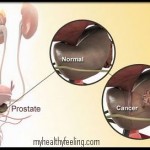Inpatient eating disorder treatment has been hailed as the best treatment for eating disorder treatments. Eating disorders exempt no one regardless of age, gender and race. However, studies show that women are more commonly affected by eating disorders than men, and usually start during adolescence. The number of people suffering from eating disorder is growing and this has caused great concern to their loved ones. The fact that the disorder has negative impact to the mental, physical, social and emotional well being of patients, if it goes untreated for a long period of time, it can lead to death. Thus, life is at stake when you have an eating disorder. High-quality, inpatient eating disorder treatment is available to fight this debilitating illness.
The treatment program involves a far-reaching plan essential in treating every aspect of the eating disorder which includes medical care, nutrition counseling and therapies. Sufferers have differing struggles and thus treatment must be individualized and made according to the needs of each patient. In this regard, inpatient eating disorder treatment is highly recommended.
What is this treatment program all about? Is it right for me? These could be just few of the many questions you may have in mind about inpatient eating disorder treatment. The succeeding paragraphs will give you an in-depth knowledge about this kind of eating disorder treatment program.
What is Inpatient eating disorder treatment?
This kind of eating disorder treatment program is also called residential program- a specialized program designed to give far-reaching treatment program. The program is done in a safe and relaxing environment to promote complete restoration of patient’s overall health as well as find out the main issues that come with eating disorder. It is individualized in order to meet the needs of every patient most especially when the eating order is already severe, moving ahead through outpatient care transition.
Objectives of Residential Program for Eating Disorders
The main objective of inpatient eating disorder treatment is to bring back overall health by maintaining sufficient dietary intake as well as limit too much exercise. Nonetheless, eating disorder affects the
entire being of the individual, so treatment does not just focus on physical health but tackles other facets of the disorder as well. Inpatient treatment does provide sound behavioral example about normal eating, and identify and figure out the psychosocial factors that influence the illness. Moreover, the program will also provide a variety of skills essential in helping patients manage healthy weight and outpatient care transitional program to make their in-patient stays shorter. Under inpatient eating disorder treatment, the patients’ safety and well-being is on top of their priority.
Structure
Now, what should you expect upon entering inpatient treatment centers? Will the people be nice to you and what does it look like? The fact is inpatient treatment centers differ and they do not share similar house rules. One thing is for sure though; they share the same goal and objective to provide the finest eating disorder treatment possible. In addition, they share similar structure but differ slightly on the progression of the program.
• Accommodation – treatment centers are like homes, designed to have secure and relaxing environment. In most cases, patients share room with their fellow patients.
• Supervised meals – meal plans are individualized and monitored. It usually consists of three substantial meals while other centers incorporate three meals and snacks a day closely supervised by the facilitators. More so, you have to follow their strict meal preparation and ensure to consume everything they have prepared for you. For those who fail to do so, they are supplemented with nutritious beverages. While for severe cases, they are fed mechanically through feeding tubes. Treatment is basically individualized in order to meet patient’s specific needs.
• Counseling sessions – inpatient eating disorder treatment centers employ a host of multidisciplinary teams composed of social workers, nurses, psychiatrists, occupational therapists, psychologist and even general practitioners. In fact, pediatric participation is also available as needed. Counseling sessions mainly compose of weekly sessions with the center’s in-house registered dietitian, medication and psychiatric management, nutritional counseling and education, personalized counseling sessions and even family sessions conducted by the clinical director.
• Group programs – treatment centers also have group programs like nutrition group, mindfulness group, fun foods, relationship group and relaxation as well as therapies like art therapy, physiotherapy, psychology, living skills, goal setting, menu planning, discharge planning and relapse prevention. Cognitive and dialectical behavioral therapy is also given. Although treatment is individualized, incorporating group programs and therapies is very effective in the recovery process as this allows you to talk with the attending staff, therapists and even to your fellow eating disorder patient. By sharing your struggles with them, you will feel that you are not alone in that journey.
• Restricted physical activity – most of the inpatient eating disorder treatment programs offer some form of exercise at the course of the treatment process, but not until the patient has already reached the healthy weight and able to eat normally. Extremely compromised cases are placed in total bed rest or even on a wheelchair to save their energy.
Conclusion
True, it takes great courage to admit that you have an eating disorder. But, it is only through this that proper treatment can be started so you can enjoy life once again.

